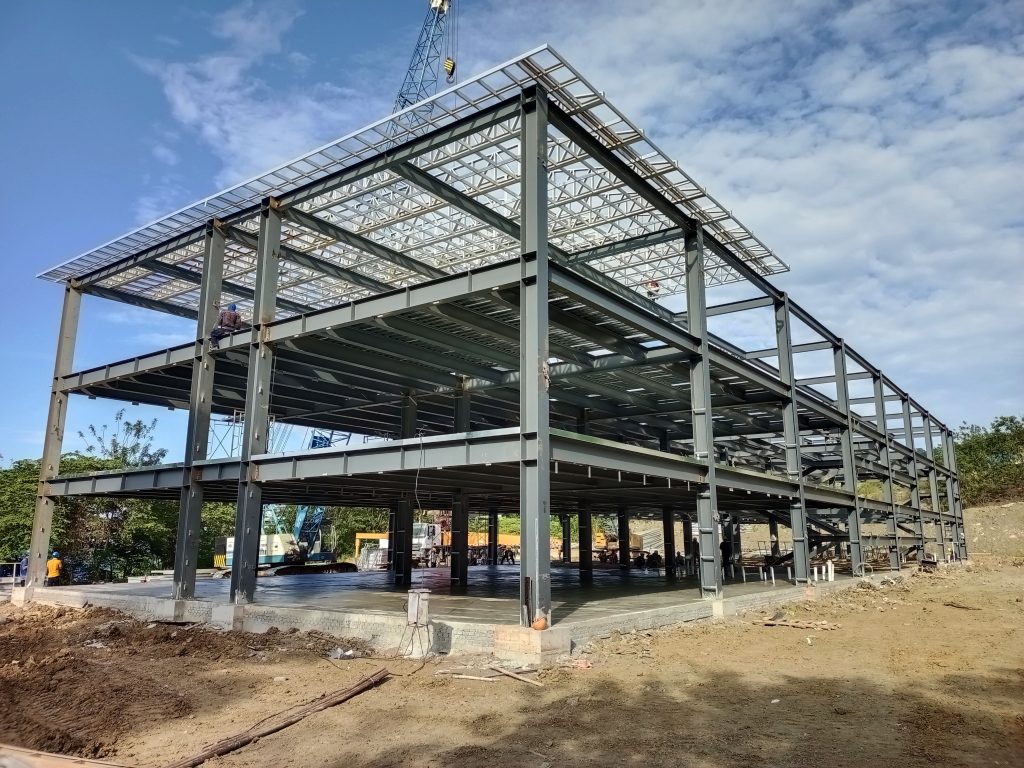Structural steel adapts beautifully to construct anywhere through strategic selections in coatings, insulation and design. Thoughtful measures match metal frameworks optimally to:
Cold Climates
Steel endures frigid zones via rigorous envelopes despite thermal conductivity. Dense insulation blankets like spray foam or mineral wool insulate framing for interior comfort. Vapor barriers install between sheathing and insulation to safeguard against moisture accumulation from indoor air permeating inwards. Durable and often post-treated metal panel options like galvalume, galvanized or zinc-aluminum coated steel outperform less robust alternatives resistant to seasonal freeze-thaw cycles, harsh deicing chemicals and punishing UV rays from reflective snowfields. Below-grade elements require special damp proofing or waterproofing coatings to elevate basement areas above potential frost lines. Strategic over-cladding conceals thermal bridging at panel seams maximizing insulation efficiencies.
Hot-Humid Regions
Breathable building enclosures prove pivotal in sticky climates. Steel constructions expel and dry moisture efficiently through rain screen principles. An air gap behind an outer metal cladding layer like corrugated terne-coated stainless steel drains and evaporates trapped moisture passively. Tight envelope air-sealing using spray foams or mastics minimize conduction preventing humid outdoor air permeating indoors. Operable sunshades deploy strategically to shade glass in summer while admitting solar heat in winter passively. Interior wall and attic insulation like fiberglass bats or blown cellulose regulate thermal swings maintaining comfort. Buried elements require advanced coatings to deter moisture penetration and microorganism growth beneath grade.

Coastlines
Coastal architecture necessitates especially durable defenses against wind, salt and moisture. Hot-dipped galvanizing applied via an electro-deposition process forms a continuous zinc-iron-nickel alloy coating protecting steel perpetually from corrosion in marine exposures. Galvalume coatings consisting of 55% aluminum, 43.4% zinc and 1.6% silicon also fortify structural elements excellently. Taking inspiration from boat building, on-structure fasteners select high-grade stainless steels rated for water immersion. Thoughtful overhangs extend from rooflines and facades to minimize rain-driven saltwater contact. Strategic drainage regiments expel moisture and dirt keeping surfaces dryer longer.
Arid Deserts
Under harsh sun exposure, reflective and emissive coatings preserve metalwork. Light-colored standing seam metal roofs reflecting 70-90% of sunlight incident upon their surface remain 20-30°F cooler than their surroundings. Sloped to efficiently shed midday heat gains, after sundowns they radiate absorbed warmth back skyward through naturally increased emissivity. Well-insulated roofs prevent underside condensation. Strategic overhangs and louvers shade elevations absorbing the most direct light. Dark-tinted and thermally broken window glazing minimizes solar heat infiltration. Indoor air-conditioning demands diminish leveraging the region’s natural aridity through prudent architectural consideration.
Seismic Zones
In quake-prone areas, properly-engineered moment frame bracing resists lateral seismic movements through ductility rather than brittleness. Deep concrete pilings embed columns firmly, transferring shaking forces horizontally through soil instead of vertically concentrating stresses. Outrigger trusses connected between ductile central moment frames and stiffer perimeter shear walls evenly distribute loading across a structure. Designers derive member sizes not through allowable stress, but rather through strength-based limit states factoring in the member’s expected cyclic inelastic demandover a structure’s lifespan. Special dampening connections like buckling-restrained braces (BRBs) further absorb and dissipate vibrational energy harmlessly.

Hurricane Regions
Coastal exposures necessitate thoughtfully wind-resistant designs. Aerodynamic profiles help deflect violent gusts upward rather than catching them onto surfaces. Self-adhered water-resistant barrier underlayments integrally bond house wraps to providesecondary moisture protectionatall transition zones beyond primary rain screens. Horizontal lapping sheds water out wards of surfaces. Structural panels like metal cladding withstand high wind loads certified up to 300mph. Vertical strapping tie sand clips reinforce panels,window sand openings rigidly.Flood-proofed electrical,mechanical equipment elevates vital building systems components above anticipatedfloodlines.Sumppumpssafelyremoveincidentalinteriorwateringress assuring long-termoperation.
Through selectively harnessing steel’s strengths with the right environment-specific protections in assemblies, buildings endure sustainably wherever visionaries seek construction. Strategies thoughtfully match metal frameworks optimally within each climate, championed expertly by innovators like Lida Group internationally. Steel structures succeed universally through contextual adaptations forged by discipline.

Related news
-
Designing Attractive Steel Exteriors with Metal Siding, Windows and Roofing Materials
2023-08-24 17:48:13
-
Certified Steel Erection Professionals Ensure Structures Are assembled following Blueprints and Codes
2023-08-25 11:21:18
-
Lighter Steel Framing Enables Cost Savings in Multistory Buildings Requiring Less Foundations
2023-08-24 17:50:39
contact us
- Tel: +86-532-88966982
- Whatsapp: +86-13793209022
- E-mail: sales@lidajituan.com


